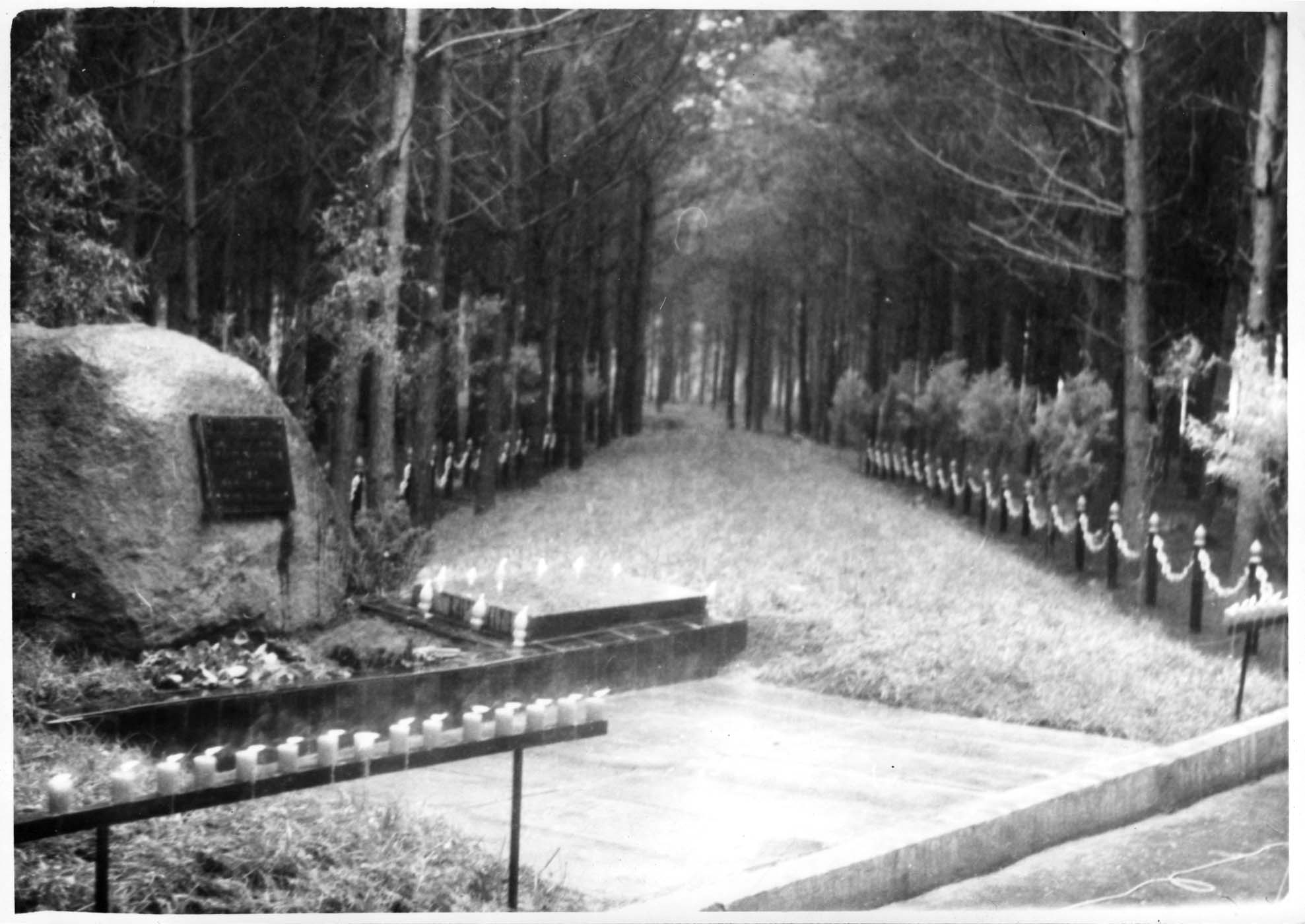

Murder Story of Ostrog Jews in the Forest in the Ostrog Area

When the Jews had arrived in the new town square (which had been surrounded with machine guns), the SS men carried out a selection: They counted the Jews and sorted them by gender, marital status, and ability to work. Thus, women with children made up a separate group, as did the elderly and sick individuals, and those incapable of work (as well as some intellectuals, rabbis, and notables). When the group consisting mostly of sick and elderly individuals had been separated from the rest, the healthy women with the children, as well as those capable of work, were sent back to the town. Then, in the afternoon, the group of sick and elderly Jews was led into the nearby forest.
Upon reaching the shooting site, the victims, who numbered 1,000-3,000, were forced to undress and line up in groups on the edge of pits that had been dug in advance by the local villagers, whereupon they were shot in the back of the head by men of the 1st SS-Motorized Infantry Brigade, who used machine guns. Thus, each new group of victims would be shot and buried atop the previous group, which had been covered with soil by local villagers standing nearby. Some of the victims were buried alive. During the shooting, which lasted until evening, Ukrainian auxiliary policemen guarded the murder site to prevent the Jews from escaping and the locals from approaching the area. Some policemen took part in the shooting, as well. They also plundered the remaining Jewish property. By evening, some 500 women who had been left at the murder site were allowed to return home. This murder operation was overseen by the commander of the 3rd Battalion, SS-Obersturmbannführer Emil Stator.
According to one testimony, on Monday, October 12, 1942, one of the German supply inspectors told his Jewish workers, in confidence, that Ostróg would be liquidated that week. According to the same testimony, at 8 AM on the next day, after the Jews from nearby villages had been moved into the ghetto, Gendarmerie chief Komorowski demanded from the Judenrat that, by midday, all the Jews assemble in the courtyard beyond the sawmill known as the "Tartak"; each Jew had to bring along two days' worth of provisions. Any Jew found hiding after this time would be shot on sight. The Landwirte (local German commissar), Balters, demanded that the Judenrat supply lists of the residents and the Jewish workers. By this time, the Ukrainian policemen, together with the German Gendarmerie, had surrounded the ghetto and herded nearly all of its inmates, including the Judenrat members, to the Pocztarka meadow (near the "Tartak"), on the town's western outskirts. The people (mostly women and children) went on to spend two days at the site, which had been fenced off with barbed wire. They were held in the open air, without food or water, under guard by the Ukrainian Auxiliary Police. Those trying to escape were killed on the spot by the policemen.
On October 15, following the arrival of the squad of the Security Police and SD from Równe in Ostróg, the Landwirte told the head of the Judenrat, Avraham Komendant, that the Jews would be permitted to return home if they handed over any remaining valuables in their possession. The SS men selected a few Jews and ordered them to make a round of the victims, recording any property they had left. When the list had been compiled, these Jews were dispatched to the ghetto, along with guards from the Gendarmerie, to gather up the things. After collecting the Jewish possessions, the members of the Judenrat, including its chair, Avraham Komendant, were shot dead near the Great Synagogue of the Maharsha.
Shortly afterward, the Jews were transported in trucks to a site in the Ostróg Forest near the "nowe miejsce", where trenches had been dug in advance by local villagers. Upon reaching the shooting site, the victims were forced to strip naked, and they were then machine-gunned by the squad of the Security Police and SD from Równe. During the shooting, living people were made to stand atop of the bodies of the shot ones, and were then shot dead in the back of the head. In addition to the SS unit, the gendarmes, along with some members of the Ukrainian Auxiliary Police, also took part in this mass shooting.
Balters, the German commissar (landwirte) of Ostróg, and Komorowski, chief of the town Gendarmerie, were in charge of this murder operation.

